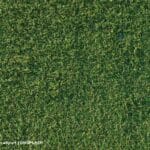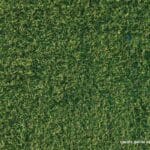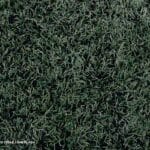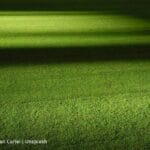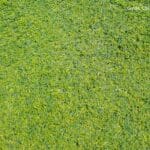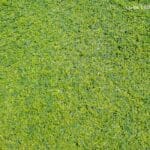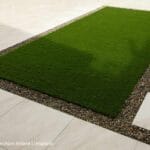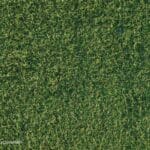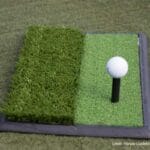The quest for eco-friendly solutions in landscaping and sports facilities has led to the widespread adoption of synthetic turf. This alternative to natural grass has gained popularity in residential, commercial, and recreational spaces. While many people initially view synthetic turf as a man-made product that could harm the environment, it is crucial to consider the various benefits it offers from an environmental standpoint. Let’s take a look at some of the aspects of synthetic turf that contribute to sustainability, so we can gain a deeper understanding of how this option might indeed be eco-friendly.
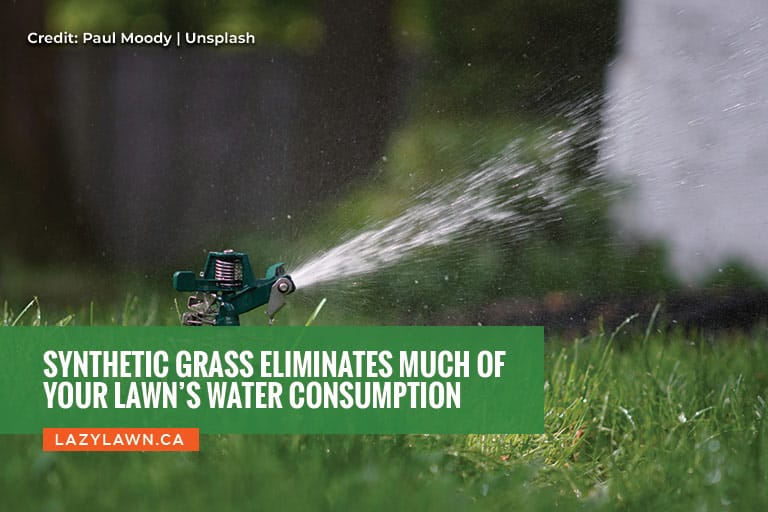
Reducing Water Consumption
One of the most significant environmental advantages of synthetic turf is the reduction in water usage. Natural grass requires regular watering to maintain its lush appearance and vitality, particularly in dry climates or during hot seasons. Lawns and outdoor spaces with natural grass typically consume vast amounts of water, often leading to resource depletion in areas already facing water shortages. As an example, in 2015 43% of Canadian households with lawns watered them regularly. In more recent years, places like Vancouver regularly restrict the frequency of watering lawns to preserve water for more vital tasks.
By switching to synthetic turf, homeowners, businesses, and municipalities can significantly reduce their water consumption. Synthetic grass does not require any irrigation, except for occasional rinsing to remove dust and debris. This reduction in water usage directly contributes to the conservation of this vital resource, helping to alleviate stress on water supplies and reduce the need for artificial irrigation systems. The shift away from water-intensive landscaping has a positive impact on the environment, particularly in regions where water conservation is a pressing concern.
Minimising Chemical Usage
Maintaining natural grass requires the regular application of pesticides, herbicides, and fertilisers to keep the lawn healthy, green, and weed-free. These chemicals are prone to seeping into the soil and groundwater, causing environmental harm. Runoff from lawns treated with these substances can also end up in rivers, lakes, and oceans, contributing to pollution and negatively affecting ecosystems.
Synthetic turf, on the other hand, eliminates the need for such chemicals. Without the worry of pests or weeds taking over, synthetic turf offers a pristine landscape that requires minimal upkeep. By reducing the use of harmful chemicals, synthetic turf helps protect local water sources from contamination. Furthermore, this reduction in chemical use benefits both the environment and human health, as individuals are less likely to be exposed to potentially hazardous substances.
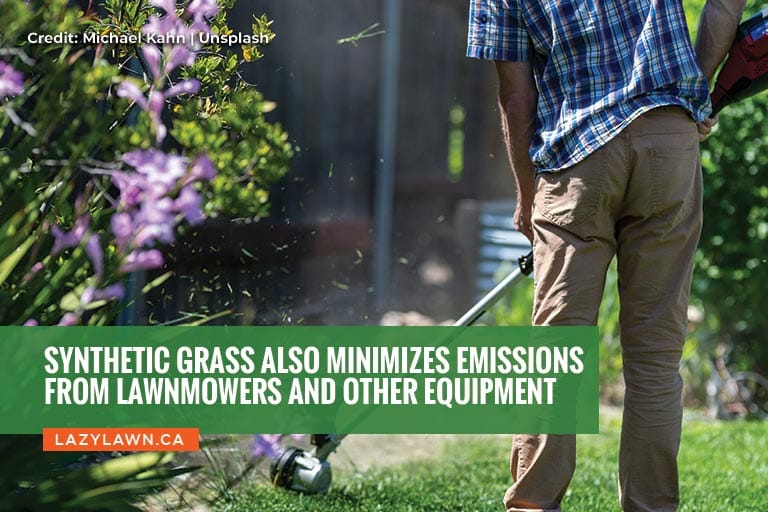
Cutting Down on Lawn Equipment Emissions
Natural grass frequently requires regular mowing, edging, and trimming to maintain its appearance. These tasks often rely on gasoline-powered lawn equipment, such as lawnmowers, trimmers, and leaf blowers. These machines emit harmful pollutants into the air, including carbon dioxide, nitrogen oxides, and volatile organic compounds (VOCs), contributing to air pollution and the acceleration of climate change.
Switching to synthetic turf removes the need for these maintenance tasks altogether. Synthetic grass remains neat and uniform without requiring mowing or trimming, reducing the overall demand for gas-powered equipment. As a result, the reduction in lawn equipment emissions can contribute to cleaner air quality and lower greenhouse gas emissions. This is particularly significant in urban areas, where air pollution is already a concern, and every step towards reducing emissions can have a positive effect on the environment.
Conserving Energy and Resources
The upkeep of natural grass is not only water-intensive but also energy-intensive. Maintaining large grass areas often requires irrigation systems, which consume electricity to operate pumps and timers. Additionally, the production, transportation, and application of fertilisers and pesticides involve considerable energy expenditure. The need to constantly reseed or sod areas where grass dies off or thins adds to the overall resource consumption associated with natural grass maintenance.
In contrast, synthetic turf does not require any of these inputs. Once installed, it remains durable and intact for many years, eliminating the need for ongoing energy and resource consumption related to maintenance. The long lifespan of synthetic turf contributes to its eco-friendly nature, as it requires fewer replacements and repairs compared to natural grass, which can wear out due to heavy use, weather conditions, or neglect.
Promoting Soil and Land Conservation
Erosion is a common issue in areas with natural grass, especially in regions with heavy rainfall or on slopes. When grass is overused, damaged, or inadequately rooted, soil can easily wash away, leading to the degradation of land and the loss of fertile topsoil. This erosion can have far-reaching consequences for local ecosystems, including the loss of plant and animal habitats and the contamination of water bodies with sediment.
Synthetic turf provides a stable and durable surface that helps prevent soil erosion. It creates a protective layer over the ground, reducing the likelihood of soil displacement. By promoting soil conservation, synthetic turf can help preserve the integrity of landscapes and prevent land degradation. This benefit is particularly relevant in areas where heavy foot traffic or athletic activities would otherwise wear down natural grass, leading to environmental harm.
Reducing the Urban Heat Island Effect
The urban heat island (UHI) effect is a phenomenon in which urban areas experience higher temperatures than surrounding rural areas due to human activities and the concentration of buildings, roads, and other heat-absorbing surfaces. Natural grass can help reduce the UHI effect by absorbing sunlight and providing a cooling effect through the process of evapotranspiration. However, natural grass requires significant water resources to maintain this cooling ability, which can be impractical in many regions.
While synthetic turf may not have the same cooling properties as natural grass, modern advancements in synthetic turf design have led to the development of materials that reflect sunlight and reduce heat absorption. Many types of synthetic turf are now designed with cooling technologies that prevent the surface from becoming excessively hot. Additionally, synthetic turf does not contribute to the UHI effect to the same extent as asphalt or concrete, making it a viable alternative for reducing heat in urban environments.
Encouraging Sustainable Landscaping Practices
The installation of synthetic turf aligns with the principles of sustainable landscaping, which emphasise the use of eco-friendly materials and practices to create outdoor spaces that have minimal environmental impact. Sustainable landscaping focuses on reducing water usage, minimising chemical inputs, and conserving energy—all of which are achieved with synthetic turf.
In addition to its immediate environmental benefits, synthetic turf can also be incorporated into broader sustainability initiatives. For example, some manufacturers produce synthetic turf using recycled materials, such as old tyres or plastic bottles. By repurposing waste materials, these companies contribute to the circular economy and reduce the demand for new raw materials. Synthetic turf made from recycled materials helps divert waste from landfills, further enhancing its eco-friendly credentials.
Supporting Biodiversity in Urban Areas
One criticism of synthetic turf is that it does not provide the same habitat for wildlife as natural grass. While it is true that synthetic turf does not support the same ecosystem as a natural lawn, it can still contribute to biodiversity in urban areas. By reducing the need for chemical treatments and water-intensive landscaping practices, synthetic turf helps create cleaner and more sustainable environments for both humans and wildlife.
Furthermore, synthetic turf can be combined with other landscaping features, such as native plants, trees, and shrubs, to support local biodiversity. By incorporating these elements into the design of a synthetic turf installation, property owners can create outdoor spaces that are both functional and environmentally friendly. These green spaces can provide shelter and food sources for birds, insects, and other wildlife, enhancing the ecological value of urban areas.
While synthetic turf may initially seem like a man-made product that could harm the environment, its many eco-friendly advantages suggest otherwise. From conserving water and reducing chemical usage, synthetic turf offers a range of benefits that make it an environmentally responsible choice. As technology continues to advance, the development of even more sustainable synthetic turf options is likely, further enhancing its potential as an eco-friendly landscaping solution.
For those seeking to create beautiful outdoor spaces without the environmental drawbacks of traditional grass, synthetic turf presents a viable alternative that contributes to sustainability and environmental protection.
When you’re in the market for artificial turf for your home, give Lazy Lawn a call. We offer a diverse range of synthetic turf options for our clients to help you build the right aesthetic for your home. Whether you need an appealing front lawn or a discreet space to relax, we provide the eco-friendly turf you’re looking for. Give us a call now at (888) 622-5296 to invest in artificial turf that looks and feels just like natural grass.




